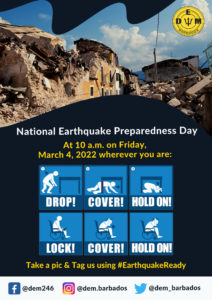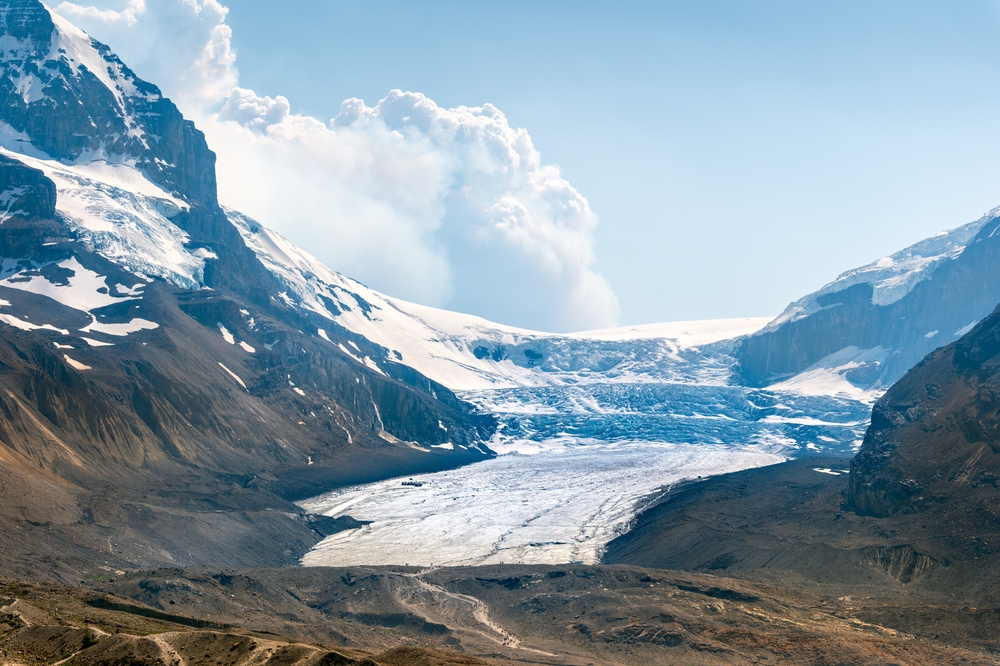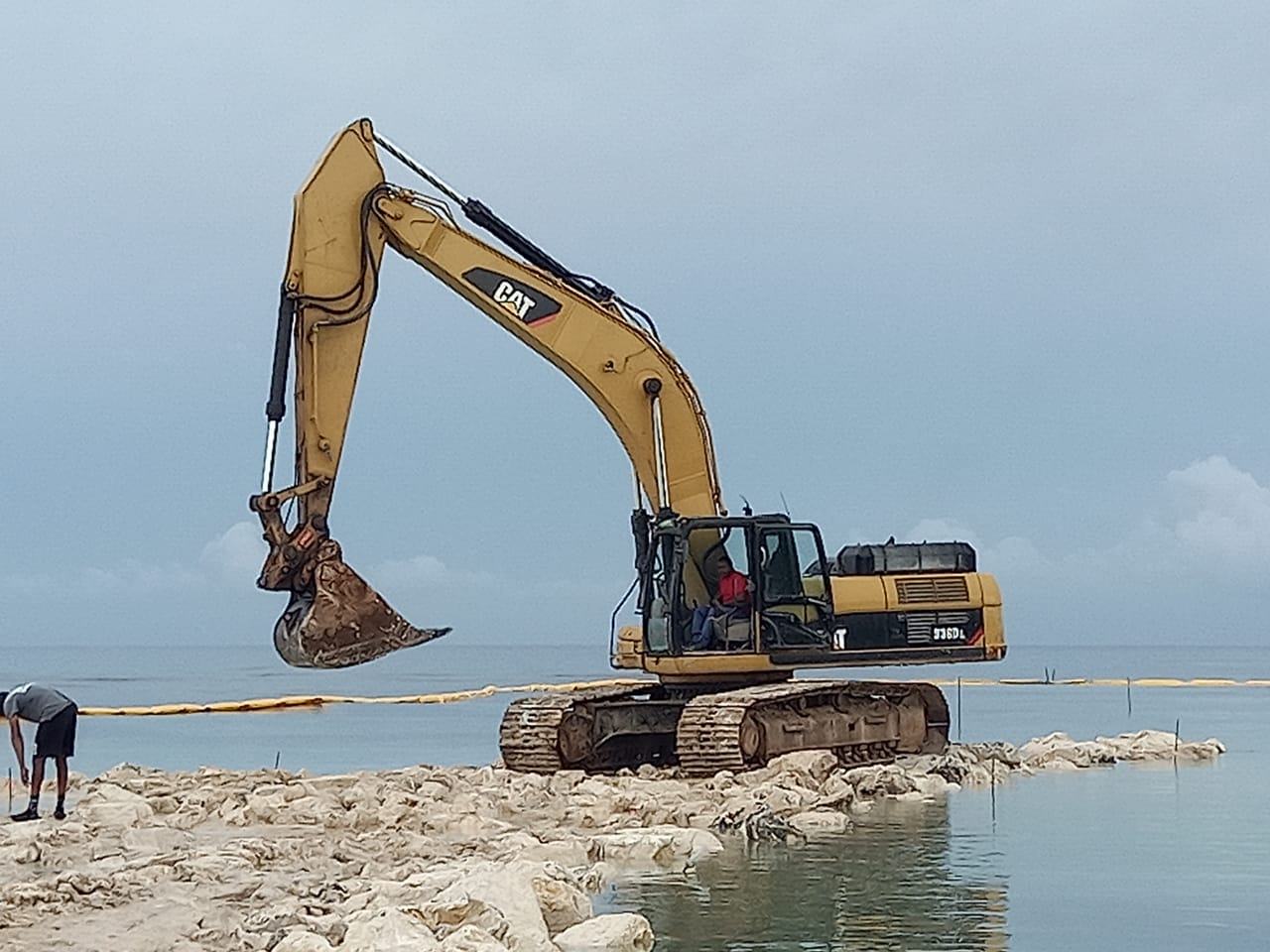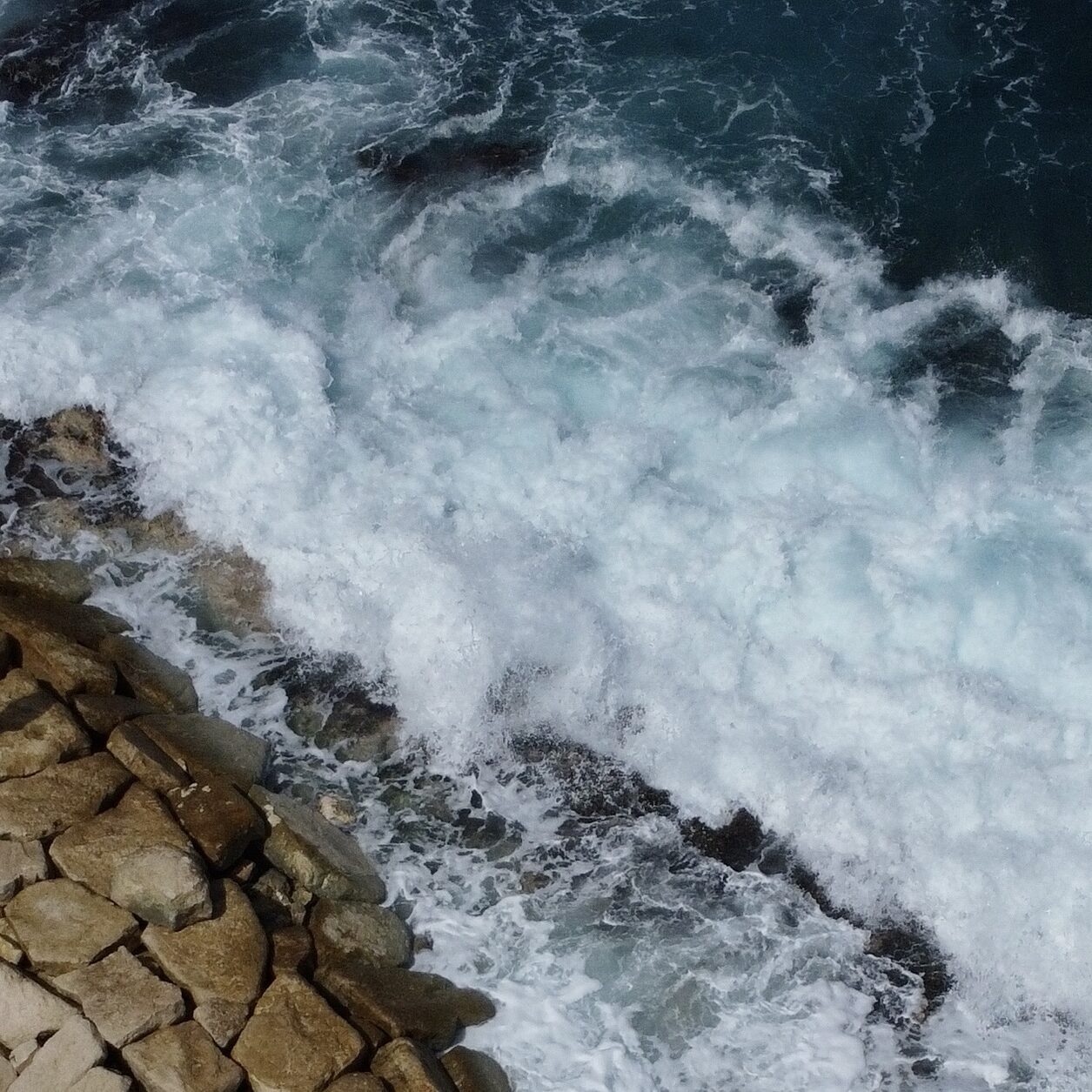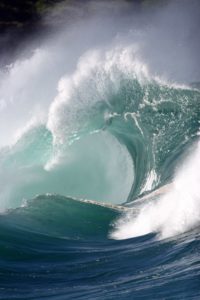
At 10am Friday morning 4 March 2022 earthquake alerts went out on the CAP.CAP app (Consistently Alerting People in Time Common Alerting Protocol) to mobile phone users all over the island of Barbados. The earthquake never actually happened. Nor had the magnitude 8.4 tsunami-producing earthquake off the coast of Venezuela in 2016, nor those off of Panama, Portugal, and Aruba in the years before. In fact, these alerts for earthquakes and tsunamis were emergency preparedness drills, all part of Barbados’s annual Tsunami and Earthquake Smart Month, held each March.
Students of all ages practiced a “drop, cover, and hold on” drill, while the Department of Emergency Management posted videos to educate others on how to protect themselves in the case of a severe earthquake.

This year, the theme is “Coastal Hazards”, and residents are warned about coastal erosion, hurricanes, storm surge, flooding, landslides, and tsunamis, in addition to earthquakes. There’s even a game show to raise awareness and test viewers on their preparedness.
During the “Caribe Wave” tsunami exercise, the Department of Emergency Management tests its alert and communication systems. Educational materials explain that it doesn’t take a lot of water to create danger. “Just six inches of fast-moving water can knock adults off their feet, and just 12 inches can carry away a small car,” reads one post with information courtesy of the U.S. National Oceanic and Atmospheric Administration. The strong undertow of a tsunami wave can carry people and debris out to sea.
The Coastal Zone Management Unit shares videos describing the effects of coastal erosion. In Barbados, 10% of the coasts are eroding, while only 2% are growing. The communications efforts aim to educate the broader public about safeguarding coastlines and replacing lost sand. They explain how the unit is studying sediment transport, especially on the island’s southeast coast where sand production is “instrumental to the resilience of the entire south coast.” One of the key points in these educational efforts is explaining setbacks and the proper use of coastal protection structures. Another calls for “strategic planting” of vegetation and warns residents and visitors not to remove protective barriers that have been placed by the government.
The nation of Barbados is known to be a leader in its coastal resilience efforts and has been working with development agencies to finance coastal protection measures.
